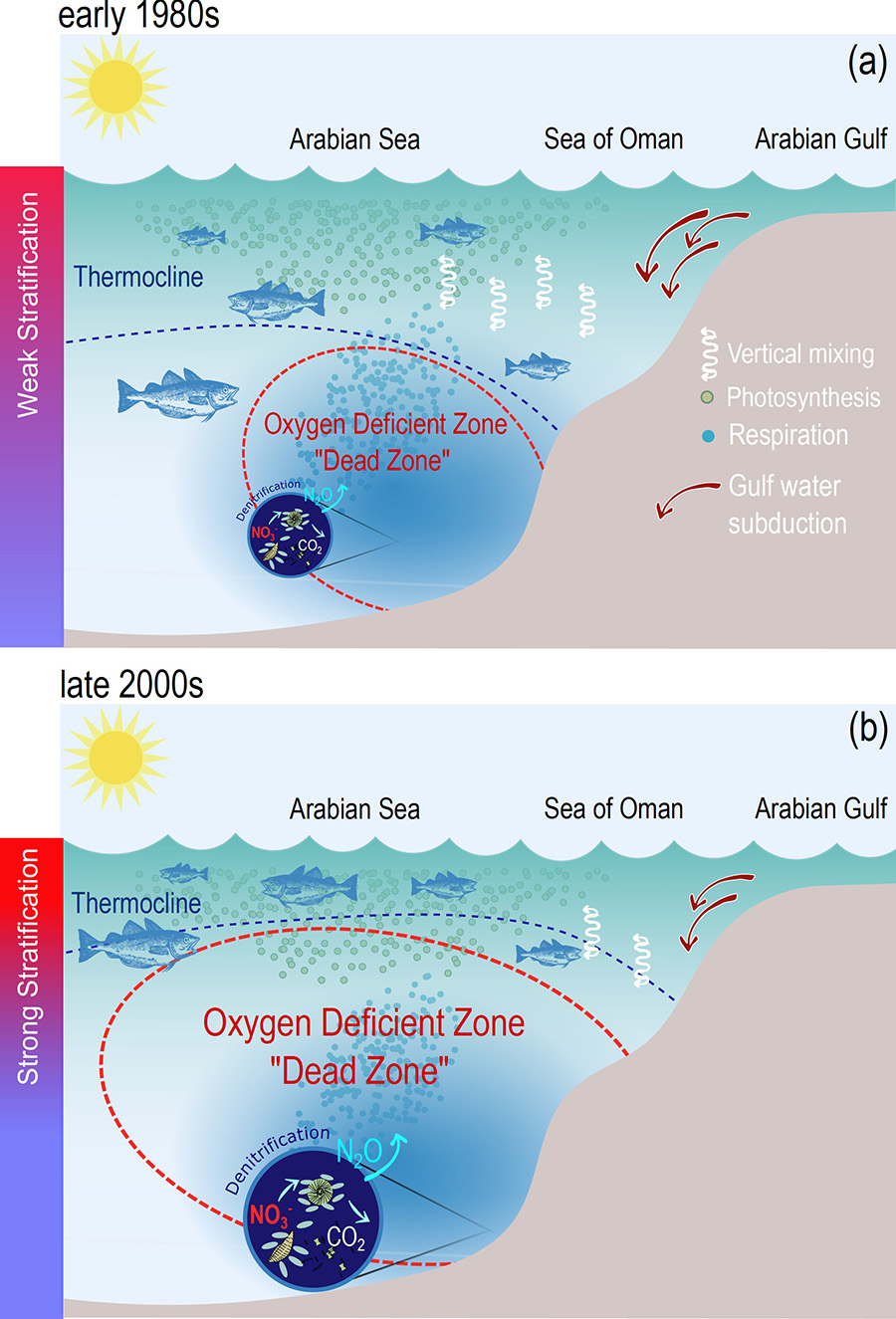A new research paper by the NYU Abu Dhabi (NYUAD) Center for Prototype Climate Modeling (CPCM) demonstrates how the warming of northern Arabian Sea and the Arabian Gulf waters is the main driver of recent deoxygenation in the northern Arabian Sea.
Published in Biogeosciences, the study titled Fast local warming is the main driver of recent deoxygenation in the northern Arabian Sea documents and quantifies a significant recent oxygen decline in the upper layers of the northern Arabian Sea leading to an expansion of the oxygen minimum zone – also known as “dead zone” – and explores its drivers. Using a modeling approach, researchers ZouhairLachkar, Michael Mehari, Muchamad Al Azhar, Marina Lévy, and Shafer Smith, showed that the fast local warming of the sea surface is the main factor causing the oxygen drop. Summer monsoon intensification contributes to this trend, although to a lesser extent.
These changes exacerbate oxygen depletion in the subsurface. They are also thought to favor winter algal blooms of the mixotroph Noctiluca scintillans at the expense of diatoms, which were previously the dominant organism and are an important source of food for fish. The Gulf warming has also been associated with important ecological and biogeochemical changes such as recent frequent mass coral bleaching events.
Senior Research Scientist ZouhairLachkar from the NYUAD Center for Prototype Climate Modeling commented on the study: “Our findings confirm that the Arabian Sea oxygen minimum zone (OMZ) has grown significantly over the last few decades as a result of local climate change. These rapid changes in the environment may lead to habitat compression or potential habitat loss for oxygen sensitive species including most fish as OMZs expansion typically leads to concentrating fish further in surface waters where fishing pressure is high.”
The CPCM is an interdisciplinary research unit at NYUAD that bridges the gap between climate theory, modeling, and observation, with the goal of better understanding fundamental processes in the earth system, and improving models to predict future climate. To learn more about its research, please visit the CPCM website.



